
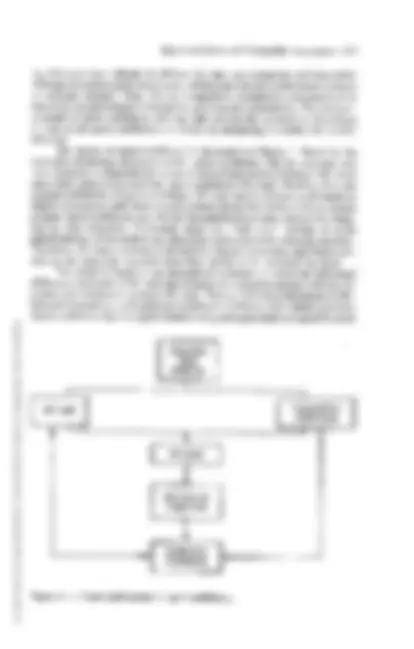
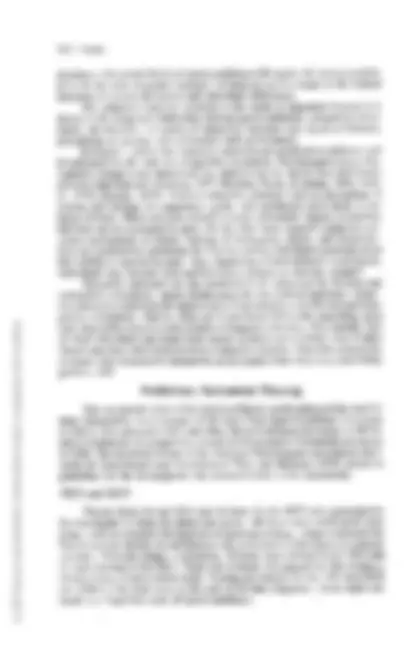
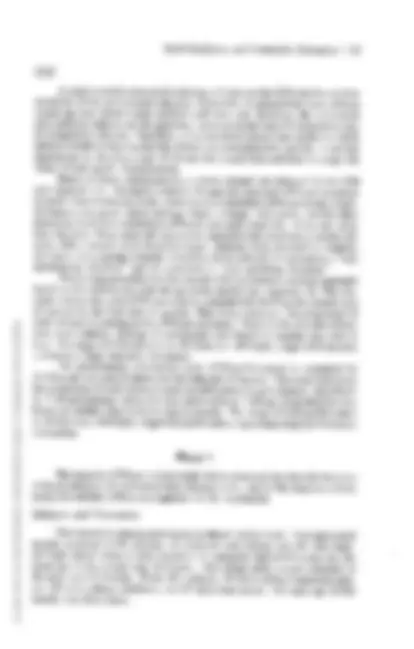

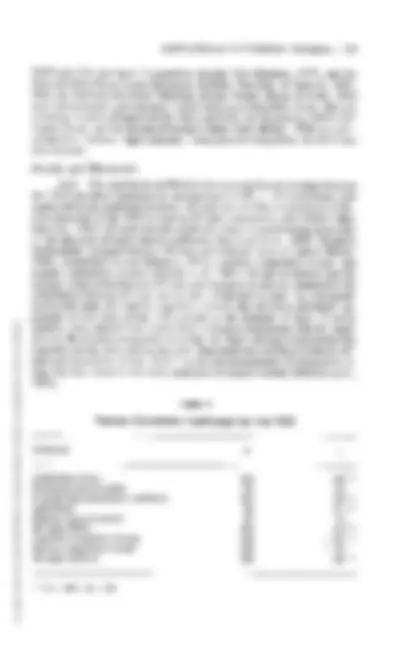

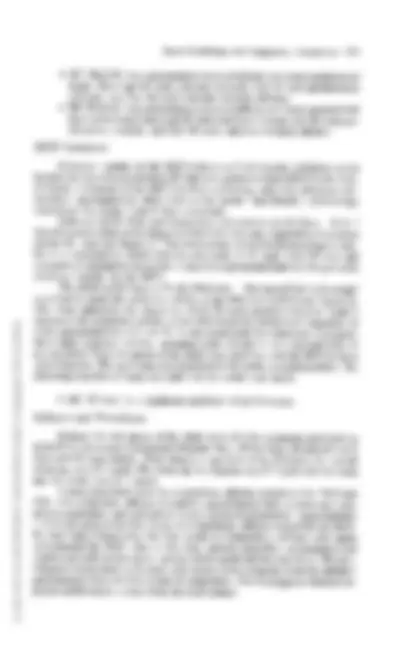
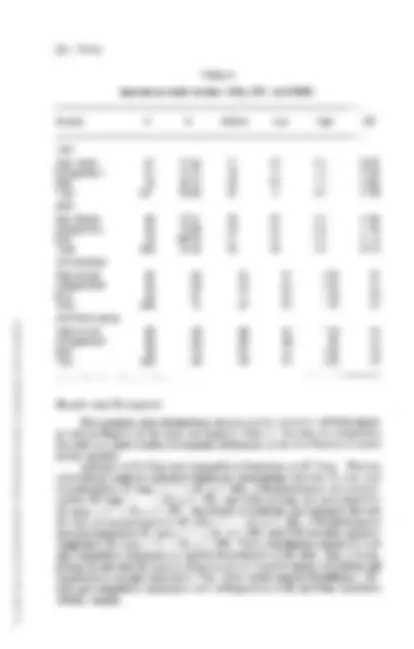
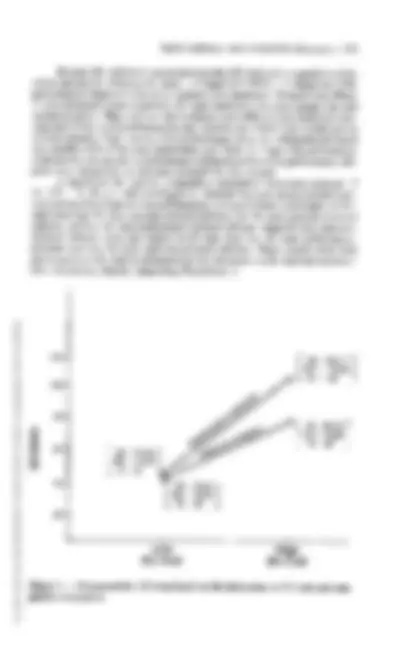

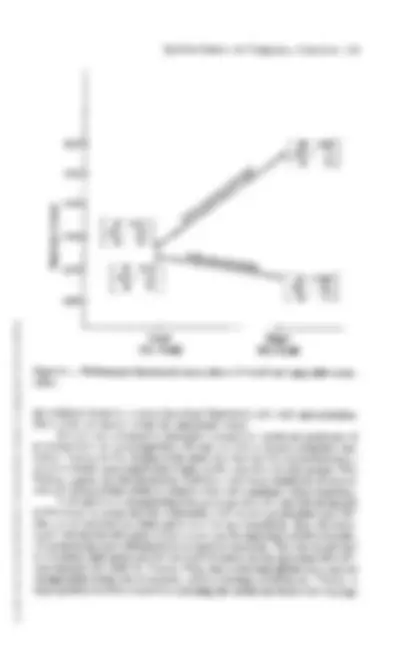



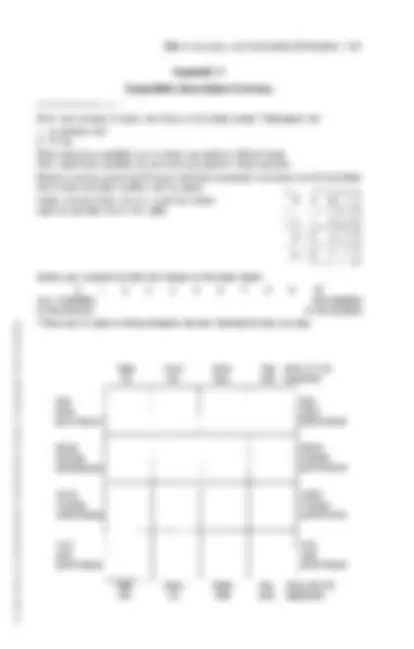
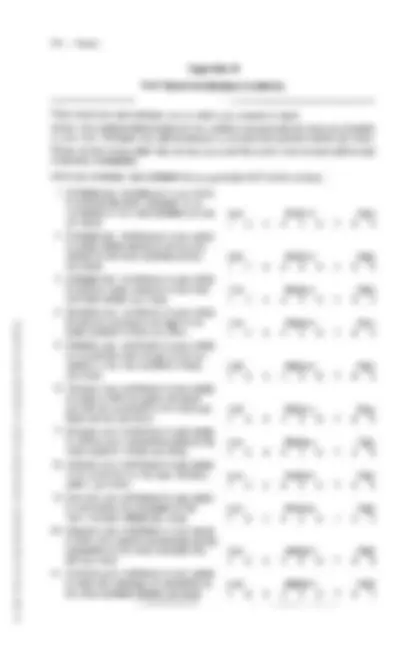
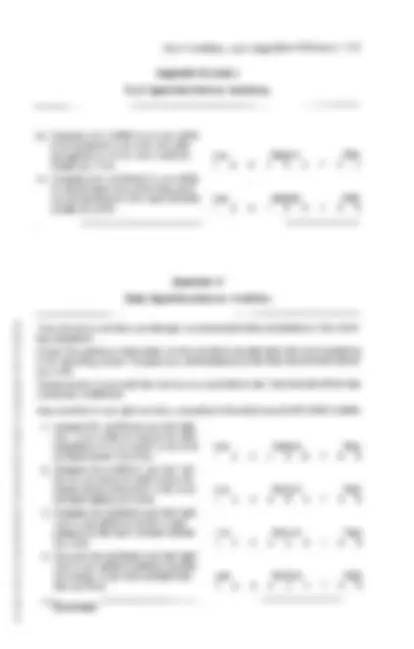
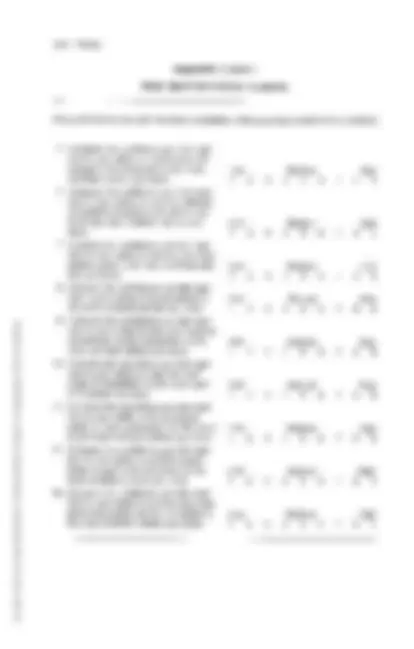


Study with the several resources on Docsity

Earn points by helping other students or get them with a premium plan


Prepare for your exams
Study with the several resources on Docsity

Earn points to download
Earn points by helping other students or get them with a premium plan
Community
Ask the community for help and clear up your study doubts
Discover the best universities in your country according to Docsity users
Free resources
Download our free guides on studying techniques, anxiety management strategies, and thesis advice from Docsity tutors
The relationship between sport-confidence trait, competitive orientation, and sport-confidence state using data from the Sport Confidence Inventory (TSCI) and the Competitive Orientation Inventory (COI). The study found that sport-confidence trait was a significant predictor of sport-confidence state, as well as a negative relationship with external locus of control, competitive A-trait, cognitive competitive A-state, and somatic competitive A-state. The document also discusses the construct validity of the TSCI and COI, and the results of Pearson correlational analyses and Student-Newman-Keuls post hoc analyses.
Typology: Exercises
1 / 26

This page cannot be seen from the preview
Don't miss anything!



















JOURNAL
OF SPORT PSYCHOLOGY,
1986,
8,^ 221-
An interactional, sport-specific model of self-confidence was developed inwhich sport-confidence
was
conceptualized
into trait (SC-trait)
and state (SC-
state) components. A competitive orientation
construct was also included in
the model to account for individual differences in defining success in sport.In order to test the relationship represented in the conceptual model, an in-strument to measure SC-trait (Trait Sport-Confidence Inventory or TSCI), an^ instrument
to measure SC-state (State
Sport-ConfidenceInventory or SSCI),
and
an^
instrument to measure competitive
orientation (Competitive
Orienta-
tion Inventory or COI) were developed and validated. Validation proceduresincluded five phases of data collection involving
high school, college,
and adult athletes.
three
instruments demonstrated adequate item discrimi-
nation, internal consistency, test-retest reliability, content validity, and con-current validity.
In^ the construct validation phase, the results supported several
predictions based on the conceptual model.Sport psychologists have traditionally adopted three approaches
in studying
self-confidence in sport. Bandura's (1977) self-efficacy theory has been used topredict behavior by measuring individuals' efficacy expectations (Feltz, 1982;Feltz, Landers,
Raeder, 1979; McAuley
Gill, 1983; Weinberg, Gould,
Jackson, 1979; Weinberg, Gould, Yukelson,
Jackson, 1981; Weinberg, Yu-
kelson,
Jackson, 1980). Conceptual models of perceived competence
(Harter,
1978; Nicholls, 1980) have also been adapted to sport in an attempt to predictachievement behavior in that context (Feltz
Brown, 1984; Roberts, Kleiber,
Duda, 1981; Spink
Roberts, 1980). Other researchers have used perfor-
mance expectancies to operationalize
self-confidence and attempt to predict be-
havior in sport (Corbin, 1981; Corbin, Landers, Feltz,
Senior, 1983; Corbin
Nix, 1979; Nelson
Furst, 1972; Scanlan
Passer, 1979, 1981).
Research based on these theories has contributed a great deal to the sport psychology literature. However, significant advances in the
of self-confidence
Requests for reprints should
be^
sent to Robin S. Vealey, Dept. of HPR, Phillips
Hall, Miami University, Oxford, OH
^1 Vealey await sport-specific conceptualization and measurement instrumentation. Self-efficacy has been operationalized in countless ways for every situation that hasbeen studied. An earlier attempt to parsimoniously operationalize self-efficacyin sport situations proved low in predictive validity (McAuley
Gill, 1983) for
the most part because the constructs
represented physical self-concept as opposed
to self-confidence in sport ability. Harter's operationalization of perceived com-petence is based on a developmental approach and her instrumentation is validonly for children. Nicholls' distinction between ego-involved and task-involvedperceived ability has yet to be operationalized. Research on expectancy, like self-efficacy, has developed countless
scales for the myriad of situations
in which ex-
pectancy is of interest. Based upon this past research, it seems that a valid, par-simonious operationalization of self-confidence would allow more consistentprediction of behaviors across different sport situations. Thus, it is the purposeof this study to provide a theoretical
model in which self-confidence may be con-
ceptualized based on the unique context of sport and develop valid instrumenta-tion to measure the constructs conceptualized in the model.
nificant developments in personality research. It seemed appropriate to concep-tualize a model of self-confidence based on the interactional paradigm, sport-specificity,
the distinction between personality traits and states, and the reciprocity
of individual differences and behavior. Because the construct being conceptual-ized is not general self-confidence but sport-specific self-confidence, the term"sport-confidence"
was adopted.
To aid in the conceptualization of sport-confidence, the literature on self- efficacy,
perceived competence, and perfo&mce expectancy
were perused. Build-
ing from these constructs, sport-confidence was defined as
the belief or degree
of certainty individuals
possess about their ability to be successful in sport.
But
as Maehr and Nicholls (1980) have stressed, success means different things todifferent people. Thus, attempting to predict behavior by measuring sport-contidence
also requires measuring the goal upon which sport-confidenceis based.
It seemed important, therefore, to include in the model a construct based uponthe goals that individuals strive for when they compete. The term "competitiveorientation" was established to indicate
a tendency for individuals to strive
toward
achieving a certain type of goal in sport. Evidence supports the existence of goalorientations in sport (Ewing, 1981;
Kidd &Woodman, 1969; Mahoney
Petrie,
1972; Snyder
Spreitzer, 1979; Webb, 1969) and nonsport (Nicholls, 1980)
Obviously, any number of goals could be operating for different
individuals
when competing in sport. However, sport-confidence is grounded in perceptionsof ability, thus the competitive orientations
should reflect an athlete's belief that
attainment of a certain
type of goal demonstrates competence and success. For
this reason, performing well and winning were selected as the goals upon whichcompetitive orientations
are based. Athletes, of course, may pursue both of these
goals simultaneously; they usually strive to play well and win at the same time.However, one goal may be more important to an athlete
the other. Achiev-
1 3 ~ s
(^) 1 3 s ~
(^) may
(^) ' 1 3 ~ s
(^01)
(^) y l y ~ hy-
(^) SB
(^) r (^) l (^) )
(^01)
(^) 1 3 s
(^) 1 3 s ~
(^) PUV
S l f m U U n (^) ptl (^) SlSaJ
P (^) V
l0S
-ws
(^) (3)
' 0 3 ~ s
(^) ' ( I ~ s J ,
(^) JO
3uaumrlsuI L.mu!uqaq
(^) IOU (^) d
(^03)
(^) d
MOI
(^01)
(^) y l y ~
(^01)
(^) d
(^) 0%
(^) ayl
(^) m
(^01)
(^) ig
(^) a n p a a d
IOU
(^01)
(^) U I
y l y ~
(^03)
(^) ayl
(^) se
(^01)
(^) y l y ~
Sport-Confidence and Competitive
Orientation
coz
A major consideration
in developing a format for the COI was the extreme
reactivity of the performance-outcome distinction. It seemed that most athleteswould say they would rather perform well
than
win. However, the orientation
they publicly endorse and the goal they strive
for in the heat of competition may
be completely different. Therefore, a measurement format was needed in whichathletes
would not have to directly choose one orientation over another. It seemed appropriate to develop a type of format that would force athletes to weigh thevalue of both goals simultaneously.
Based on these considerations, a matrix format was adopted for the COI (see Appendix A). The matrix contains 16
cells that represent different situations
in sport. One dimension of the matrix (rows) establishes different levels of per-formance (very good, above average, below average, very poor), and the otherdimension (columns) establishes different outcomes (easy win, close win, closeloss, big loss). Thus, each cell represents a situation that combines a certain out-come with a certain level of performance. Athletes were directed to completethe matrix by assigning a number from
unsatisfying situation" and 10 represents a "very satisfying situation."
The scoring
procedure devised for the COI is a variance analysis approach
based on the columns-by-rows design of the matrix (see Appendix A). The out-come orientation score (COI-outcome) is computed by dividing the
sum
of squares by the total sum of squares. This score represents the proportion oftotal variance occurring
across different outcomes. That is, COI-outcome reflects
how much athletes' feelings of satisfaction vary based on whether they win orlose. The range of COI-outcome is
(low) to
(high). High COI-outcome
represents a high outcome orientation.
The performance orientation score (COI-performance) is computed by dividing
the
row
sum of squares by the total sum of squares. This score represents
the proportion of total variance based on differences
in performance. Specifical-
ly, COI-performance represents how much athletes' feelings of satisfaction varybased on whether they perform well or poorly. The range of COI-performanceis .00 (low) to 1.
(high).
High COI-performance
represents a high performance
orientation.
The purpose of Phase 1 of the study was to assess (a) the internal structure of the inventories,
(b)
individual item characteristics,
and (c) the degree to which
Two hundred subjects participated in Phase
sample consisted of
subjects, of which
were female and
were male.
All high school subjects were members of scholastic basketball teams and themean age of the sample was 16.6 years. The college/adult sample consisted of46 males and
females. Of the
subjects,
were college basketball play-
ers, 30 were college swimmers, and
were road racers. The mean age of this
sample was 20.2 years.
(^) 1 3 s ~
l ~ q
(^) u~oy
(^01)
(^) s!
(^) 13s.~
I@
(^) npns (^) '
(^39)
(^01)
(^) SEM
(^) '13~s
(^) 1 3 s ~
(^) J U ~ ~ I J J ~ O ~
(^) '0s'
(^) 13~s
(^) 1 3 s ~
(^) JOJ
SBM
(^) op
(^) ~13~s
(^) =
(^) =
(^) =
(^) '(1s (^) =
(^) =
(^) =
(^10) (^) '(6s (^) =
(^) = u)
(^) SEM
(^) 0s
(^) pan lo nu.^
leu
MOI
(^) M
(^01)
(^) 1 3 s ~
(^) JOJ
(^) 13~s
(^) 13s~
^1 Vealey
The participants in Phase 3 were 219 subjects, consisting
of 109
high
school
athletes of which 88 were female and 21 were male. The college sample consist-ed of 110 athletes of which 32 were female and 78 were male. Subjects in bothsamples were members of physical education
classes and had participated in some
form of competitive sport. The mean ages for subjects were 17.1 years for thehigh school sample and 20.4 years for the college sample.
The high school and college samples were divided into three groups. Group 1 in each sample was administered the TSCI and COI and then readministeredthe same inventories 1 day later. Group
TSCI and COI and then readministered the same inventories 1
week later. Group
3 in each sample was administered the TSCI and COI and then readministeredthe same inventories 1 month later. Three investigators carried out the testing,but all retests were administered by the investigator who made the initial
contact.
All investigators
read the same set of instructions each time the inventories were
For the TSCI, the following reliability coefficients were obtained: 1 day (r^ =
.86), 1 week (r
= .89), and 1 month (r
= .83). The results indicated that
test-retest reliability (r
= .86 across time and samples) for the TSCI was well
above the accepted .60 criterion (Nunnally
following reliability coefficients were obtained: 1 day (r
= .69), 1 week (r
=
.69), and 1 month (r
= .69). For COI-outcome, the following reliability coeffi-
cients were obtained: 1 day
(r^
=^ .69), 1 week (r
=^
.69), and 1 month (r
=^
Across times and samples, both COI-performance (r
=
.69) and COI-outcome
(r^ =
.67) met the accepted criterion. These analyses
indicated
that sport-confidence
and competitive orientation, as operationalized by the TSCI and COI, are fairlystable dispositions that may be measured across time.
Concurrent validity determines the effectiveness of a test in predicting
Subjects used in this phase were those who participated in Phase
study (n
=
199). Group A consisted of 59 high school athletes and
college
athletes
=^
103). Group
high school athletes and 52 college
athletes (n
=
In a noncompetitive situation, subjects in Group A were administered the
230
^1 Vealey
Table
2
Pearson Correlation Coefficients for the SSCI
Construct
N^
r
Competitive A-traitPerceived physical abilityPhysical self-presentation confidenceExternal locus of controlCognitive competitive A-stateSomatic competitive A-stateSC-state (CSAI-2)SC-trait^ " ' p
.001;
_ * p_*
.
The correlations between the SSCI and other constructs are listed
in Table
Several of the correlations were significant in the predicted direction.
SC-state was positively related to SC-trait, SC-state measured by the CSAI-2,and physical self-presentation confidence. SC-state
was negatively related to com-
petitive A-trait and both cognitive and somatic competitive
A-state. Again, sport-
confidence was more strongly related to cognitive anxiety than somatic anxiety.SC-state
and external
locus of control were not correlated significantly,
nor were
SC-state and perceived physical ability.
COI-performance
was significantly
related in a positive direction to
SC-state as operationalized by the SSCI, r
= +^ .29;
p^ <
COI-outcome was
significantly related in a negative direction to SC-state as operationalized by theSSCI, r
=
This evidence suggests that the goals athletes focus
on when competing (competitive orientation)
are related to precompetitive sport-
confidence. Specifically, focusing on performing well is related to higher levelsof SC-state, and focusing on winning and losing is related to lower levels ofSC-state.
A low but significant positive relationship emerged between COI-perfor- mance and physical self-presentation confidence, r
= +^
p^ <
This result
suggests
that performance orientation
is related to confidence in displaying phys-
ical ability and having that ability evaluated by others. Clearly, defining compe-tence and success by performance is related to approaching the highly evaluativeenvironment of sport with confidence.
Finally, COI-performance was significantly correlated in a negative direc- tion with external locus of control, r
=
and COI-outcome was
significantly correlated in a positive direction with external locus of control, r^ =^
A positive characteristic of performance orientation is the con-
trol over competence and success that it creates. Outcome orientations are notconducive to perceptions of control over success because winning and losing insport are highly unstable and uncontrollable outcomes. Thus, it is logical thatperformance orientation is negatively related and outcome orientation positivelyrelated to external locus of control.
Sport-Confidence and Competitive Orientation
COI-performance and COI-outcome were not significantly related to SC- trait, competitive A-trait, cognitive and somatic A-state, SC-state measured bythe CSAI-2, and perceived physical ability. It is difficult to explain why com-petitive orientation was significantly related to SC-state measured by the SSCIand not related to SC-state measured by the CSAI-2. It may
be based on the differ-
ent operationalizationof self-confidence
in the SSCI as compared to the CSAI-2.
The SSCI seems to tap individuals' cognitive appraisals about how their abilitywill compare to the demands of a specific situation. The CSAI-2, on the otherhand, seems to tap somatic and cognitive reactions to the cognitive appraisalprocess. This is evident in such CSAI-2 items as
feel at ease," "I feel com-
fortable,"
and "I
feel secure."
This conceptual difference between sport-
confidence
as measured by the SSCI versus the CSAI-2 may have accounted for
the different relationships
between competitive
orientation and SC-state as mea-
sured by the two inventories.
The task in construct validation is to provide evidence that an instrument operationally defines
the construct it was designed to measure. This involves testing
the adequacy of hypothesized relationships
between the construct being validat-
ed and other constructs in the theoretical model.
construct validation model
was developed to illustrate the theoretical
relationships
to^ be
examined (see Figure
2). The theoretical
constructs
and their relationships
are shown above the broken
line, and the relevant operational definitions of these constructs and their rela-tionships are shown below the broken line.
any validation process it is neces-
sary to assume some links are valid while testing other links. Figure
-^ Construct validation
model.
Conceptual
SC-trail
3
Behavioralresponses
CompetitiveOrientation
4
11
-^ - -^ -^ - -^ - -^ -
,
-^
-^ --.
-^ -
-^
-^ -
TSCl
Measures
2
Behavioralmeasures
Other Individual
Situational
Other
difference factors
factors
factors
InfluencingSC-state
Influencing
lnlluencing
operationalized
SC-state
behavior
Operational
Other indlvldualdifference
factors Influencing SC-state
SiluatlonalfactorsinfluencingSC-state
Other factorsinfluencingbehavior
Sport-Confidence
and
Competitive
Orientation
H7: High SC-trait performance-oriented athletes rate their performancehigher than high SC-trait outcome-oriented, low SC-trait performanceoriented, and low SC-trait outcome-oriented athletes.H8: High SC-trait performance-oriented athletes are more satisfied withtheir performance than high SC-trait
outcome-oriented,
low SC-trait
per-
formance-oriented, and low SC-trait outcome-oriented athletes.
because the theoretical
construct (SC-state) is operationalized (SSCI) in this link.
Construct validation of the SSCI involves examining Link
tionships represented by other links in the model. Specifically, relationshipsrepresented by Links 2 and 9 were examined.
Influence of SC-Trait and Competitive Orientation on SC-State.
Link 2
was discussed earlier as the degree
to which SC-trait and competitive
orientation
predict SC-state (see Figure 2). This relationship
will
not be discussed again here,
but it is important to realize that the prediction of SC-state from SC-trait andcompetitive orientation (using their respective operationalizations) also providesconstruct validity for the SSCI.
The
Ability ofSC-State to Predict
Behavior.
The second link in the model
examined to assess the construct validity of the SSCI was Link 9 (see Figure 2).This links represents the degree to which SC-state predicts behavior. Link 9represents the predictive validity of the SSCI to predict behavioral responses-itis the operational level of Link 10. To the extent Link 9 is supported, it is possi-ble to infer construct validity, assuming Links 10 and 11 are valid and Link 12is controlled. Thus, this phase of the study examined how well the SSCI
predicts
sport
behavior. The sport
behavior measured in this study was performance. The
following hypothesis based on Link
in the model was tested:
H9: SC-state is a significant predictor of performance.
Subjects for this phase of the study were
elite gymnasts participating
in the U.S. Gymnastics Federation National Meet. Of the total, 28 subjects weremale and 20 were female. They ranged in age from 15 to 25 years; the overallmean age was 19.
years. The mean age for females was 17.7 years and the mean
age for males was 21.1 years.
Twenty-four hours prior to competition, athletes completed the TSCI and COI. Also at this time, athletes
completed a questionnaire that recorded age, com-
petitive experience, and perceptions of past success
in^ gymnastics. Approximately
hours prior to the first round of competition,
athletes completed the SSCI.
No later than 2 hours after the first round of competition, athletes were againadministered the SSCI. Also at this time, athletes rated their performance andsatisfaction with performance, and provided causal attributions for it. The per-formance scores used in the study were mean scores computed from the athletes'performances from the first round of competition. The investigator obtained ob-jective performance scores from the meet judges.
Table
Normative Data for the TSCI, COI, and SSCl
Sample
N^
M^
Median
Low
High
SD
=
p^ <
=
<^ .001, and COI-outcome and precompetitive
=
<^ .001. Significant correlations also emerged between
=
<^ .001, COI-performance
=
p^ <
r^ =
<^ .006.
236
^1 Vealey^ No interaction emerged between SC-trait and competitive orientation for postcompetitive SC-state using similar analysis of variance procedures. However,a significant main effect occurred for SC-trait, F(l, 43)
=^
p^ <
.001, with
high SC-trait athletes (M
=^
=
=^ 24) higher in postcom-
petitive SC-state than low SC-trait athletes (M
=^
=^
Also, a main effect emerged for competitive orientation, F(l, 43)
=
p
=
=
=
in^ postcompetitive
SC-state
than outcome-oriented
athletes (M
=^
=^
=^ 23). Thus, although no interaction emerged for postcompeti-
tive SC-state, the findings indicate that both SC-trait
and competitive orientation
influence this variable.
Influence o
f SC-Trait and Competitive Orientation on Outcomes.
Simple
correlations representing the relationships between SC-trait, competitive orien-tation, and subjective outcomes are shown in Table 4. These correlations pro-vide partial support for Hypotheses 3 and 4. Because the validation model predictsthat SC-trait and competitive orientation
interact
to influence subjective
outcomes,
2 (highllow TSCI)
ance were employed using the four subjective outcomes as dependent variables.As before, median splits were used to dichotomize
the TSCI and COI-performance
variables into high and low groups (see Table 3 for median splits of elite sample).
Table
4
Pearson Correlations of Subjective Outcomes
with SC-Trait, Performance Orientation, and Outcome Orientation
Performance
Outcome
SC-Trait
orientation
orientation
Internal attributions
.42***
.73*
-.69***
Performance rating
.^
.42*
-^ **.33****
Performance satisfaction
.^
**.53*****
-^ .46***
Perceived success
.55*
*^
.^ -^.
The first subjective outcome examined was causal attributions for per- formance. A combined score representing internal attributions was used for thisanalysis. Athletes rated on a 9-point scale how much each of six factors influencedtheir performance: ability, effort, readiness for competition, ability of other gym-nasts, difficulty of the routines, and luck. The scores for ability, effort, and read-iness for competition were added together to create an internal attribution score.Significant correlations were demonstrated
the predicted direction between SC-
trait and internal attributions
as well as competitive orientation
and internal attri-
butions (see Table 4). A significant main effect for SC-trait emerged, F(l, 43)^ =^
.002, as high SC-trait athletes (M
=^
= 3.41) elicited
Sport-Confidence
and
Competitive Orientation
/^^237
more internal attributions than low SC-trait athletes (M
=^
=
Also, performance-oriented
athletes (M
=^
1.71) were more inter-
nal in their attributions than outcome-oriented athletes (M
=^
=^
F(l, 43)
=
.001. Although no interaction effect emerged in this anal-
ysis to support Hypothesis 5, both SC-trait and competitive orientation weredemonstrated to influence athletes' attributional patterns.
These results support Weiner (1979), who states that success attributed internally is related to pride, confidence, and satisfaction. Other researchers
have
supported a relationship between internal attributions and self-confidence (Coving-ton
Beery, 1976; Fyans
Maehr, 1979; Gilmor
Minton, 1974). The rela-
tionship between attributions and sport-confidence is very significant. It seemsthat athletes use attributions to obtain feedback about their performance that isintricately related to perceptions of ability and feelings of competence and success.
The relationship between performance orientation and attributions is also significant. These results indicate that performance orientations may allow ath-letes to take personal responsibility
for their performance irrespective of outcome.
This finding is consistent with the positive relationship
between performance orien-
tation and internal locus of control (Rotter, 1966)demonstrated in the concurrentvalidity phase.
The second subjective outcome examined was perceived success, or the percentage of past sport experiences in which athletes perceived they had beensuccessful. Only SC-trait
was significantly related to perceived success (see Ta-
ble 4). Analysis of variance indicated a main effect only for SC-trait, F(l, 43)^ =^
.001, as high SC-trait athletes (M
=^
= 9.38) perceived
they had been more successful than low SC-trait athletes (M
71.30). Thus,
no interaction effect emerged to support Hypothesis
as only SC-trait signifi-
cantly influenced perceived success.
Performance
rating is another subjective outcome hypothesized to be related
to SC-trait and competitive orientation.
significant relationship emerged be-
tween performance orientation and performance rating, but no relationshipemerged between SC-trait and performance rating (see Table 4). Analysis of var-iance indicated that performance-oriented athletes (M
1.64) rate
their performance higher than outcome-oriented athletes (M
=^
=^
F(l, 43)
=^
.001. No main effect for SC-trait or interaction between
SC-trait and competitive orientation emerged for these data to support Hypothe-sis 7.
However, these results demonstrate that higher self-perceptions of perfor- mance are related to performance orientation. This is significant because
performance has a much greater impact upon cognitions and behavior than actual performance. By defining success and competence as performing well, ath-letes increase their chances of being successful. And as demonstrated by theseresults, how success is defined is even more crucial than level of confidence (SC-trait) in assessing self-performance.
The fourth subjective outcome examined in relation to the model of sport- confidence was perfomance satisfaction. Simple correlational analyses indicatedthat performance satisfaction was significantly related to performance orienta-tion (see Table 4). No relationship emerged between performance satisfactionand SC-trait. Again in the analysis of variance, no interaction between SC-trait
Sport-Confidence
and
Competitive Orientation
I^
I^
I
Figure
Performance based on the interaction of SC-trait and competitive orien-
tation. the evidence supports a sound theoretical framework and valid operationaliza-tions of the constructs within the conceptual model.
SC-trait and competitive orientation emerged as significant predictors of precompetitive and postcompetitive SC-state as well as several subjective out-comes. Perhaps the key finding of the study was that high SC-trait
performance-
oriented athletes were significantly higher in SC-state than
other groups. This
finding suggests that the interaction of athletes' individual d e f d t i o of successwith perception of their ability is related to their self-confidence
when competing.
Although it was disappointing
that precompetitive SC-state did not predict
performance, it seems that this relationship will remain questionable until SC-state can be measured at a time nearer to or during competition. Also, the inves-tigator felt that the elite nature of the sample and the importance
of this particular
competition may have influenced precompetitive
measures. The elite sample had
an extremely high mean and low standard deviation for the precompetitive SC-state measure (see Table
It seems likely that world-class athletes at a national
championship would not consciously admit to feelings of diffidence. Clearly, amajor problem in field research is controlling
the extraneous factors that impinge
^1 Vealey upon sport behavior. As seen in the validation model (see Figure
this study
was hampered by the failure to control Links
5 and 12. Additional testing of the
model is needed that employs designs and methodologies to accurately measureSC-state immediately prior to and during competition and to gain more preciseperformance measures. Performance
did emerge as a significant predictor of post-
competitive
SC-state, suggesting that athletes quickly internalize feelings of com-
petence and success based on their performance.
The serendipitous finding that the interaction of SC-trait and competitive orientation significantly influenced performance warrants careful interpretation.Although SC-trait and competitive
orientation proved to be better predictors than
SC-state in this study, these results are too premature to warrant modificationsin the conceptual model. Overall, however, these findings suggest that it is im-portant to understand not only how confident athletes are in sport, but also uponwhat their confidence is based.
Sport psychologists may bemoan the conceptualization
of another self-con-
fidence construct when research is currently divided into the areas of self-efficacy,perceived competence, and expectancy. However, the conceptualizationof sport-confidence originated in this study is not intended to add further "chaos in thebrickyard7' (Forscher, 1963)
but to enhance parsimony in the field of sport psy-
chology by conceptualizing self-confidence as specific
and unique to sport. Sport-
confidence and competitive orientation have been developed in order to draw fromthe various areas studying self-confidence
and build a situation-specific
theoreti-
cal framework that will help sport psychologists understand and predict behaviorin sport.
Following the method of strong inference suggested by Landers (1983), relationships
depicted in the conceptual
model of sport-confidence
need to be sub-
jected to alternative
explanations and theoretical modifications. Although evidence
was obtained to support the constructs in the model, construct validity is a psy-chometric property that is never proven. Rather, it is inferred from the accumu-lation of evidence. Additional research is needed to replicate these proceduresin order to build upon, modify, and extend the findings of this study.
Anastasi,
A.
Psychological testing.
New York: Macmillan.
Bandura,
A.^
(1977). Self-efficacy: Toward a unifying theory of behavioral change.
Psy-
chological Review,
Bandura,
A.,
Reese,
&^ Adarns, N.E. (1962). Microanalysis
of action and fear arousal
as a function of differential levels of perceived self-efficacy.
Journal of Personality
and Social Psychology,
Corbin, C.B. (1981). Sex of subject, sex of opponent, and opponent ability as factors
affecting self-confidence
in a competitive situation.
Journal of Sport Psychology,
Corbin, C.B., Landers, D.M., Feltz,
D.L.,
&^ Senior,
(1983). Sex differences
in per-
formance
estimates:
Female lack of confidence
vs. male boastfulness.
Research Qzuzr-
terly for Exercise and Sport, 54,
Corbin, C.B.,
&^ Nix, C. (1979). Sex-typing of physical activities and success predictions of children before and after cross-sex competition.
Journal of Sport Psychology,